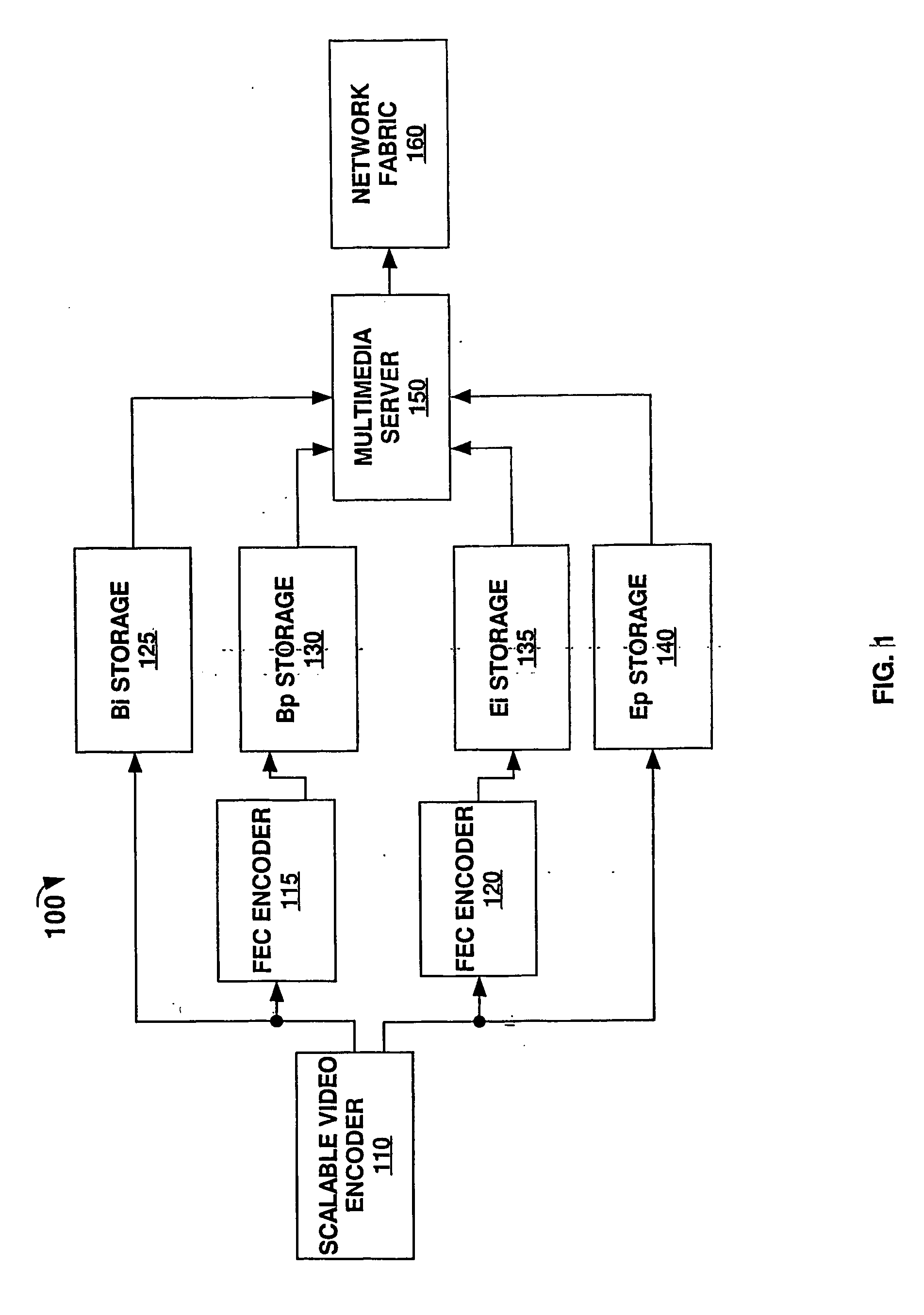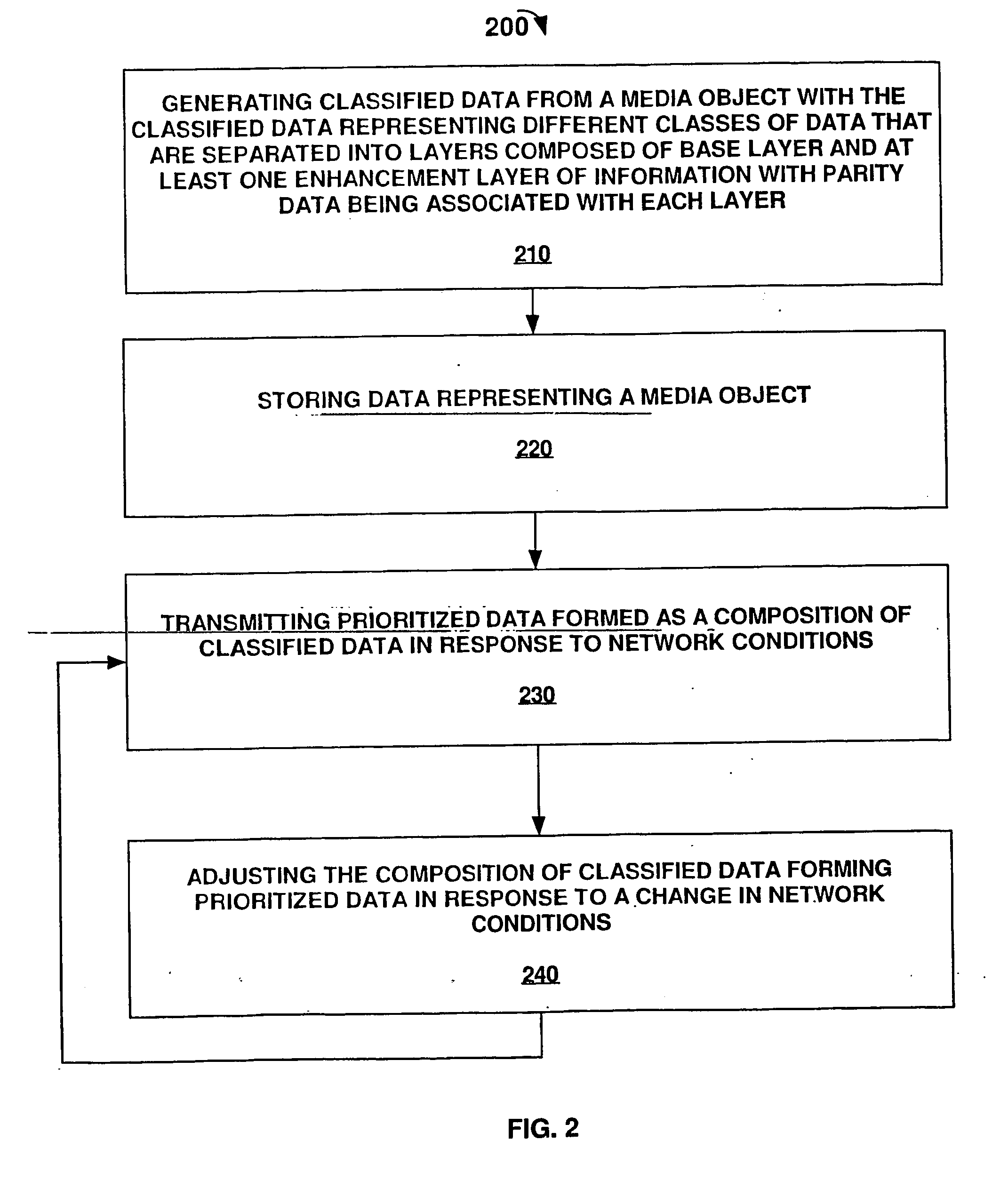Multimedia server with simple adaptation to dynamic network loss conditions
a dynamic network loss and multi-media server technology, applied in the field of transmission of prioritized data, can solve problems such as video services, referred to as media objects or streaming audio/video, often suffer quality problems, and computational complexity of encoding/decoding data, and achieve resilience to network losses
- Summary
- Abstract
- Description
- Claims
- Application Information
AI Technical Summary
Benefits of technology
Problems solved by technology
Method used
Image
Examples
Embodiment Construction
[0012] As used herein, multimedia related data that is encoded and is later transmitted represents a media object. The terms information and data are also used synonymously throughout the text of the invention as to describe pre or post encoded audio / video data. The term media object includes audio, video, textual, multimedia data files, and streaming media files. Multimedia files comprise any combination of text, image, video, and audio data. Streaming media comprises audio, video, multimedia, textual, and interactive data files that are delivered to a user's device via the Internet or other communications network environment and begin to play on the user's computer / device before delivery of the entire file is completed. One advantage of streaming media is that streaming media files begin to play before the entire file is downloaded, saving users the long wait typically associated with downloading the entire file. Digitally recorded music, movies, trailers, news reports, radio broa...
PUM
 Login to View More
Login to View More Abstract
Description
Claims
Application Information
 Login to View More
Login to View More - R&D
- Intellectual Property
- Life Sciences
- Materials
- Tech Scout
- Unparalleled Data Quality
- Higher Quality Content
- 60% Fewer Hallucinations
Browse by: Latest US Patents, China's latest patents, Technical Efficacy Thesaurus, Application Domain, Technology Topic, Popular Technical Reports.
© 2025 PatSnap. All rights reserved.Legal|Privacy policy|Modern Slavery Act Transparency Statement|Sitemap|About US| Contact US: help@patsnap.com



